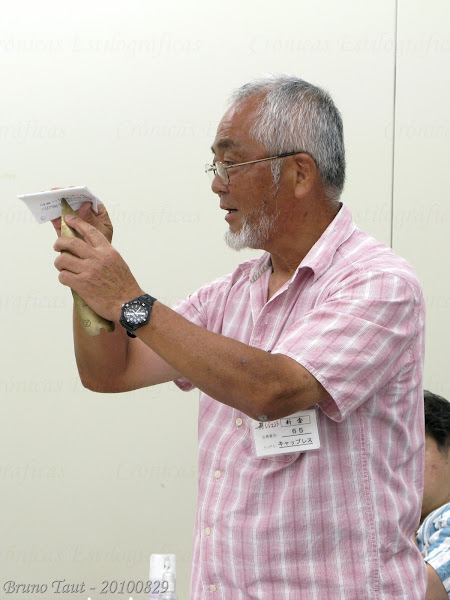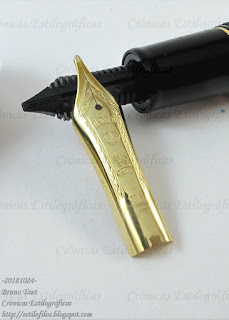This past weekend, the second edition of the
Tokyo International Pen Show (TIPS) took place in the Ward of Taito in Tokyo. I attended it and these are my reflections.
The plain figures are very clear and straight-forward: about 2000 visitors, 1200 on the first day; about 200 foreigners; 86 tables with 71 traders. This means a big success and a significant improvement over the results of 2018: 1600 visitors and 50 traders.
 People and inks. Are those the argument of TIPS?
People and inks. Are those the argument of TIPS?
My criticism this year is, in essence, the same as on
2018——this event was not a pen show, this was a stationery salon (like some others in Tokyo:
Bungujoshi,
Kamihaku, and Inkunuma (
::1::,
::2::)) where you could find some fountain pens. Vintage pens, on their side, were limited to four or five tables——Wagner group, Seoul Pen Show, Andre Mora, Stylus Aurea, and Pen Land/Komehyo. And not even the parallel Wagner meeting on Sunday at a different venue, could correct this deficiency.
 The table of the Seoul Pen Show with some vintage pens.
The table of the Seoul Pen Show with some vintage pens.
However, this didn't mean that there were no fountain pens. Many of the traders were well established stationers from all over Japan who have their own special pen models and inks, mostly made by Sailor. This was the case of BunguBox, Kingdom Note, Nagasawa, Ei-Publishing Co. (Shumi-no Bungubako)… And in fact there is a demand for all those somehow different pens—if only because of their colorful decoration.
This prevalent presence of Sailor –even if indirect-- made
Leigh Reyes say that this was the pen show of Sailor. The presence of the other two big companies was marginal.
 Sailor inks, Sailor pens. Kingdom Note.
Sailor inks, Sailor pens. Kingdom Note.
The international presence was more important this year: Franklin-Christoph, Schon, Yaching Style, Armando Simoni Club, Andre Mora, Stylus Aurea, Aesthetic Bay... But they accounted to just about 10% of the traders.
 Aesthetic Bay, from Singapore.
Aesthetic Bay, from Singapore.
 Franklin-Christoph, from USA.
Franklin-Christoph, from USA.
All in all, the most interesting aspect of the show was, as is often the case, the community of users. On this edition, and much to my surprise, the number of visitors coming from overseas was particularly big. Organizers speak of 10% of the attendees being foreigners. That means about 200 people. I don't know how they came with this number, but I am afraid they considered any long term resident in Japan as foreign visitor. Anyway, this edition attracted visitors from Australia, Hong Kong, Taiwan, Thailand, Philippines, Singapore, United States, Canada, France, Italy, Spain... This fact is indeed remarkable and contributed to provide a cosmopolitan air to an otherwise very parochial show.
 An active and enthusiastic group of foreign visitors.
An active and enthusiastic group of foreign visitors.
TIPS is not a pen show, and TIPS is barely international. But 2000 visitors move a lot of money and are a powerful argument not to change the business model.
At the end, the stationery market is a lot more important and lucrative than that of fountain pens.
 Paper, paper, paper...
Paper, paper, paper...
NOTE: TIPS 2020 will take place on November 7th and 8th in Hamamatsucho area in Tokyo.
My thanks a Inktraveler for several of the pictures here included.
Parker 51 Demi 1948 – Kobe Nagasawa Bokko
Bruno Taut
Nakano, October 8th 2019
etiquetas: mercado, evento, Sailor, Tokyo, papelería


































































